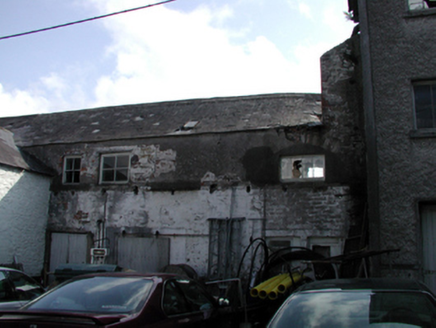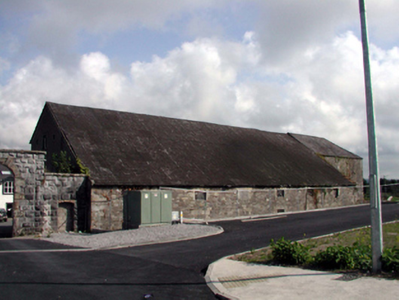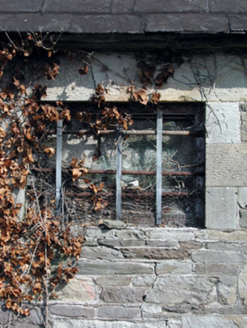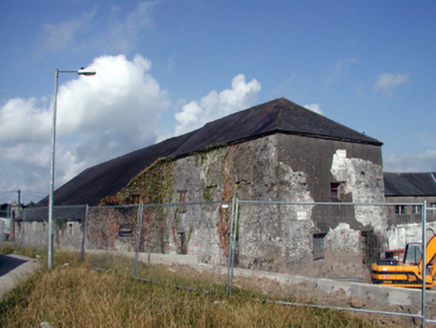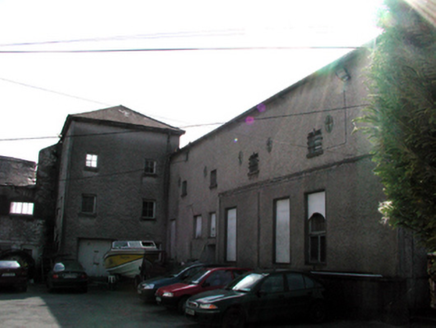Survey Data
Reg No
22821066
Rating
Regional
Categories of Special Interest
Architectural, Historical, Social
Original Use
Brewery
Date
1820 - 1840
Coordinates
225485, 93261
Date Recorded
04/09/2003
Date Updated
--/--/--
Description
Attached thirteen-bay single-, two- and three-storey over part-raised basement building, c.1830, on a quasi L-shaped plan originally forming part of brewery complex comprising six-bay two-storey over part-raised basement rubble stone range with half-attic having six-bay single-storey rear (south) elevation, two-bay three-storey recessed end bay to east, three-bay two-storey perpendicular wing to north (completing L-shaped plan), and two-bay three-storey infill block to corner on a square plan. Renovated, c.1980. Now disused. Pitched slate roof (asymmetrical pitch continuing down over rear (south) elevation; hipped to wing to east; pitched to wing to north; pyramidal to infill block) with clay ridge tiles, and cast-iron rainwater goods on rendered squared rubble stone eaves. Random rubble stone walls to main block with unpainted replacement roughcast, c.1980, to side (west) and to front (north) elevations having cast-iron tie plates, unpainted lime rendered walls to wings to east and to north, and unpainted replacement roughcast walls, c.1980, to infill block. Square-headed window openings to main block with tooled cut-stone block-and-start surrounds, and remains of timber fittings having wrought iron bars. Square-headed window openings to remainder with stone sills, and fixed-pane timber windows with some openings having 2/2 timber sash windows. Square-headed door openings now boarded up. Set in shared grounds with tarmacadam forecourt, and rear (south) elevation fronting on to road.
Appraisal
An important component of the industrial heritage of Dungarvan, this building forms one of the earliest-surviving components of a brewery that operated on site from the early nineteenth century. The complex plan and massing suggests that it is a building resulting from a number of periods of construction. Now disused, the building nevertheless retains much of its early form and massing, with the remains of some important salient features and materials enhancing the character of the site.
